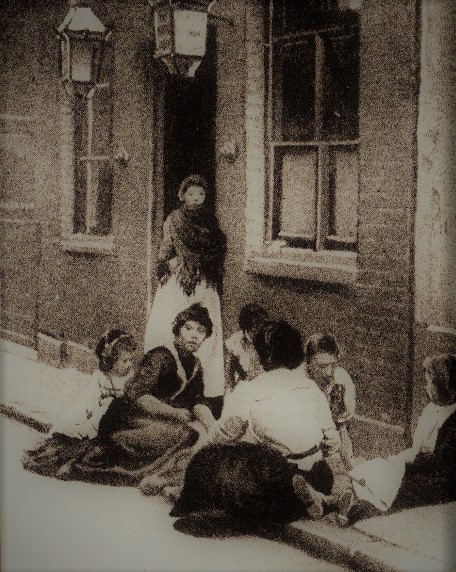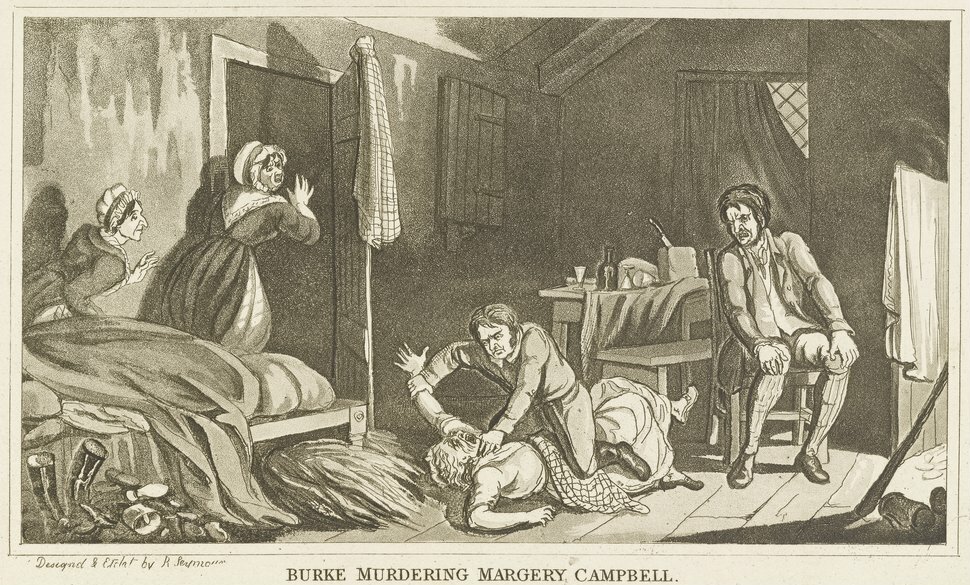|
Over The Edge (Jonathan Kellerman Novel)
Alex Delaware is a literary character created by American writer Jonathan Kellerman. The Alex Delaware detective series begins with ''When the Bough Breaks'', published in 1985. Delaware appears in 32 of Kellerman's popular murder mysteries. Kellerman set the series in Los Angeles. Delaware is a forensic psychologist, although Kellerman wrote a back story in which Delaware practiced as a child psychologist. Delaware has a friend, Milo Sturgis, who is a gay LAPD detective. Delaware helps Sturgis in his investigations, and the detective, who eventually reaches the rank of lieutenant, appears in each book in the series. As the series progresses, Delaware's relationship with Robin Castagna evolves, despite two long separations, during which various other romantic interests are introduced. In some of the more recent books in the series, Detective Petra Connor, introduced in Kellerman's standalone novel ''Billy Straight'', also makes an appearance. The Post-Modern Detective Alex De ... [...More Info...] [...Related Items...] OR: [Wikipedia] [Google] [Baidu] |
Jonathan Kellerman
Jonathan Seth Kellerman (born August 9, 1949) is an American novelist, psychologist, and Edgar- and Anthony Award–winning author best known for his popular mystery novels featuring the character Alex Delaware, a child psychologist who consults for the Los Angeles Police Department. Born on the Lower East Side of New York City, his family relocated to Los Angeles when Jonathan was nine years old. Kellerman graduated from the University of Southern California (USC) with a doctor of philosophy degree in psychology in 1974, and began working as a staff psychologist at the USC School of Medicine, where he eventually became a full clinical professor of pediatrics. He opened a private practice in the early 1980s while writing novels in his garage at night. His first published novel, ''When the Bough Breaks'', appeared in 1985, many years after writing and having works rejected. He then wrote five best-selling novels while still a practicing psychologist. In 1990, he quit his pr ... [...More Info...] [...Related Items...] OR: [Wikipedia] [Google] [Baidu] |
Bipolar Disorder
Bipolar disorder, previously known as manic depression, is a mental disorder characterized by periods of depression and periods of abnormally elevated mood that last from days to weeks each. If the elevated mood is severe or associated with psychosis, it is called mania; if it is less severe, it is called hypomania. During mania, an individual behaves or feels abnormally energetic, happy or irritable, and they often make impulsive decisions with little regard for the consequences. There is usually also a reduced need for sleep during manic phases. During periods of depression, the individual may experience crying and have a negative outlook on life and poor eye contact with others. The risk of suicide is high; over a period of 20 years, 6% of those with bipolar disorder died by suicide, while 30–40% engaged in self-harm. Other mental health issues, such as anxiety disorders and substance use disorders, are commonly associated with bipolar disorder. While the causes of ... [...More Info...] [...Related Items...] OR: [Wikipedia] [Google] [Baidu] |
Psychiatry
Psychiatry is the medical specialty devoted to the diagnosis, prevention, and treatment of mental disorders. These include various maladaptations related to mood, behaviour, cognition, and perceptions. See glossary of psychiatry. Initial psychiatric assessment of a person typically begins with a case history and mental status examination. Physical examinations and psychological tests may be conducted. On occasion, neuroimaging or other neurophysiological techniques are used. Mental disorders are often diagnosed in accordance with clinical concepts listed in diagnostic manuals such as the ''International Classification of Diseases'' (ICD), edited and used by the World Health Organization (WHO) and the widely used '' Diagnostic and Statistical Manual of Mental Disorders'' (DSM), published by the American Psychiatric Association (APA). The fifth edition of the DSM (DSM-5) was published in May 2013 which re-organized the larger categories of various diseases and expanded upon the p ... [...More Info...] [...Related Items...] OR: [Wikipedia] [Google] [Baidu] |
History Of Psychiatric Institutions
The lunatic asylum (or insane asylum) was an early precursor of the modern psychiatric hospital. The fall of the lunatic asylum and its eventual replacement by modern psychiatric hospitals explains the rise of organized, institutional psychiatry. While there were earlier institutions that housed the "insane", the conclusion that institutionalization was the correct solution to treating people considered to be "mad" was part of a social process in the 19th century that began to seek solutions outside of families and local communities. History Medieval era In the Islamic world, the '' Bimaristans'' were described by European travellers, who wrote about their wonder at the care and kindness shown to lunatics. In 872, Ahmad ibn Tulun built a hospital in Cairo that provided care to the insane, which included music therapy. Nonetheless, physical historian Roy Porter cautions against idealising the role of hospitals generally in medieval Islam, stating that "They were a drop in the oce ... [...More Info...] [...Related Items...] OR: [Wikipedia] [Google] [Baidu] |
Jack The Ripper
Jack the Ripper was an unidentified serial killer active in and around the impoverished Whitechapel district of London, England, in the autumn of 1888. In both criminal case files and the contemporaneous journalistic accounts, the killer was called the Whitechapel Murderer and Leather Apron. Attacks ascribed to Jack the Ripper typically involved female prostitutes who lived and worked in the slums of the East End of London. Their throats were cut prior to abdominal mutilations. The removal of internal organs from at least three of the victims led to speculation that their killer had some anatomical or surgical knowledge. Rumours that the murders were connected intensified in September and October 1888, and numerous letters were received by media outlets and Scotland Yard from individuals purporting to be the murderer. The name "Jack the Ripper" originated in the "Dear Boss letter" written by an individual claiming to be the murderer, which was disseminated in the press. ... [...More Info...] [...Related Items...] OR: [Wikipedia] [Google] [Baidu] |
Serial Killer
A serial killer is typically a person who murders three or more persons,A * * * * with the murders taking place over more than a month and including a significant period of time between them. While most authorities set a threshold of three murders, others extend it to four or lessen it to two. Psychological gratification is the usual motive for serial killing, and many serial murders involve sexual contact with the victim. The Federal Bureau of Investigation (FBI) states that the motives of serial killers can include anger, thrill-seeking, financial gain, and attention seeking, and killings may be executed as such. The victims may have something in common; for example, demographic profile, appearance, gender or race. Often the FBI will focus on a particular pattern serial killers follow. Based on this pattern, this will give key clues into finding the killer along with their motives. Although a serial killer is a distinct classification that differs from that of a mass mu ... [...More Info...] [...Related Items...] OR: [Wikipedia] [Google] [Baidu] |
Cyberspace
Cyberspace is a concept describing a widespread interconnected digital technology. "The expression dates back from the first decade of the diffusion of the internet. It refers to the online world as a world 'apart', as distinct from everyday reality. In cyberspace people can hide behind fake identities, as in the famous The New Yorker cartoon." (Delfanti, Arvidsson, 150) The term entered popular culture from science fiction and the arts but is now used by technology strategists, security professionals, government, military and industry leaders and entrepreneurs to describe the domain of the global technology environment, commonly defined as standing for the global network of interdependent information technology infrastructures, telecommunications networks and computer processing systems. Others consider cyberspace to be just a notional environment in which communication over computer networks occurs. The word became popular in the 1990s when the use of the Internet, networking, a ... [...More Info...] [...Related Items...] OR: [Wikipedia] [Google] [Baidu] |
Privacy
Privacy (, ) is the ability of an individual or group to seclude themselves or information about themselves, and thereby express themselves selectively. The domain of privacy partially overlaps with security, which can include the concepts of appropriate use and protection of information. Privacy may also take the form of bodily integrity. The right not to be subjected to unsanctioned invasions of privacy by the government, corporations, or individuals is part of many countries' privacy laws, and in some cases, constitutions. The concept of universal individual privacy is a modern concept primarily associated with Western culture, particularly British and North American, and remained virtually unknown in some cultures until recent times. Now, most cultures recognize the ability of individuals to withhold certain parts of personal information from wider society. With the rise of technology, the debate regarding privacy has shifted from a bodily sense to a digital sense. As the ... [...More Info...] [...Related Items...] OR: [Wikipedia] [Google] [Baidu] |
Jack Kevorkian
Murad Jacob "Jack" Kevorkian (May 26, 1928 – June 3, 2011) was an American pathologist and euthanasia proponent. He publicly championed a terminal patient's right to die by physician-assisted suicide, embodied in his quote, "Dying is not a crime". Kevorkian said that he assisted at least 130 patients to that end. He was convicted of murder in 1999 and was often portrayed in the media with the name of "Dr. Death". In 1998, Kevorkian was arrested and tried for his role in the voluntary euthanasia of a man named Thomas Youk who had Lou Gehrig's disease, or ALS. He was convicted of second-degree murder and served 8 years of a 10-to-25-year prison sentence. He was released on parole on June 1, 2007, on condition he would not offer advice about, participate in, or be present at the act of any type of euthanasia to any other person, as well as neither promote nor talk about the procedure of assisted suicide.Monica Davey"Kevorkian Speaks After His Release From Prison" ''The Ne ... [...More Info...] [...Related Items...] OR: [Wikipedia] [Google] [Baidu] |
Agoraphobia
Agoraphobia is a mental and behavioral disorder, specifically an anxiety disorder characterized by symptoms of anxiety in situations where the person perceives their environment to be unsafe with no easy way to escape. These situations can include open spaces, public transit, shopping centers, crowds and queues, or simply being outside their home on their own. Being in these situations may result in a panic attack. Those affected will go to great lengths to avoid these situations. In severe cases people may become completely unable to leave their homes. Agoraphobia is believed to be due to a combination of genetic and environmental factors. The condition often runs in families, and stressful or traumatic events such as the death of a parent or being attacked may be a trigger. In the DSM-5 agoraphobia is classified as a phobia along with specific phobias and social phobia. Other conditions that can produce similar symptoms include separation anxiety, post-traumatic stress dis ... [...More Info...] [...Related Items...] OR: [Wikipedia] [Google] [Baidu] |
Dysfunctional Families
A dysfunctional family is a family in which conflict, misbehavior, and often child neglect or abuse and sometimes even all of the above on the part of individual parents occur continuously and regularly, leading other members to accommodate such actions. Children sometimes grow up in such families with the understanding that such a situation is normal. Dysfunctional families are primarily a result of two adults, one typically overtly abusive and the other codependent, and may also be affected by substance abuse or other forms of addiction, or sometimes by an untreated mental illness. Parents having grown up in a dysfunctional family may over-correct or emulate their own parents. In some cases, the dominant parent will abuse or neglect their children and the other parent will not object, misleading a child to assume blame. Perceptions and historical context A common misperception of dysfunctional families is the mistaken belief that the parents are on the verge of separation and ... [...More Info...] [...Related Items...] OR: [Wikipedia] [Google] [Baidu] |







